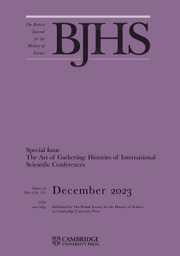Finn Arne Jørgensen, Dolly Jørgensen and their eleven contributing authors’ Sharing Spaces is an excellent work in the history of animals and technology. Joining the growing corpus of literature in history, geography, STS and anthropology that has examined the intersections between animals and technology, these thirteen essays make fascinating contributions to the field through showing how technologies have been instrumental in the exploitation, study, care, exhibition and monitoring of animals. Not only have technologies enabled humans to interact with and understand animals in novel ways over the last two centuries, but so too have they transformed human and animal interaction on material, physical and emotional levels.
The first three chapters focus on working animals, investigating how technology was used in the exploitation of cattle and the ‘improvement’ of meat; how technology shaped relationships among technology, animals and nomadic ways of life; and how technology mediated interactions between animal and human bodies. These rich case studies encompass the invention of the calorimeter in the United States, the German and later Japanese colonization and transformation of Chinese livestock-keeping practices in Qingdao, and transport animals and technologies in Mongolia respectively.
The next four chapters examine animals within the wild. Chapters 4 and 5 examine hunting practices, traditions and ethics as mediated by dogs, guns, radio, GPS and smartphone technologies in Sweden and Finland. Chapters 6 and 7 examine radio-collar studies of wolves in Finland, and ‘care protection’ (p. 102) technologies for white-tailed eagles such as bird banding, winter feeding and artificial nest construction in Sweden and Finland.
The subsequent three chapters focus on aquatic animals utilized for human purposes of entertainment, research and mineral prospecting. This section encompasses the penguin trade and its reception in the United States, glass as a technology mediating encounters between humans and aquatic animals from early aquariums to computer screens, and technologically augmented elephant seals employed as ‘Oceanographic Samplers’ (p. 157).
Finally, Chapter 11 compares guide dogs and electronic mobility aids for blind people, and Chapter 12 examines how cameras have transformed human emotional responses to animals from flee, fight or flight to picture, pet or play. The epilogue, meanwhile, sums up the book through the lenses of human–animal–technological entanglement and visibility.
Every chapter in this book is fascinating in its own right and the editors deserve praise for putting together such an innovative volume. A major strength of the book is that technology, like animals, is also imbued with agency and vitality. Often in works on animals and infrastructure or technology, technology appears to be dead, inert, a backdrop against which human and animal action takes place, or something that is transformed by animals and not the other way around. Drawing upon insights from vital materialism, this volume takes technology seriously as a transformative and agentive force in mediating human and animal realtions, and in this way makes a critical contribution to more-than-human scholarship.
Another strength is the Fennoscandian emphasis of the volume: four papers focus on Sweden or Finland. This is an area that has received scant attention in English-language animal studies, yet as the rich and fascinating case studies presented in Chapters 4 to 7 show, this is a fertile site for multi-species history and ethnography. This said, in other ways, the book’s geographical scope is also a weakness, there being no case studies from Africa, Oceania or South America.
Although this in no way detracts from the excellent material within the book, another lacuna is the lack of attention given to animals who create technologies. The introduction explicitly defines technology as human-made tools, and the chapters all focus on how humans create technologies to interact with or study animals, how animals are transformed into technology, or interfaces between humans and animals as mediated by technology. Missing within this framework was an analysis of how animals themselves construct and use technologies. There could, for example, have been a chapter on chimpanzees, crows or other tool-making species and what their technology construction means for the interface between humans, animals and technology. More attention could also have been given to how animals interact with human worlds on their own terms via technologies, such as how pest animals use human technologies for access to food, shelter and so on. This would have given animals somewhat more agency over technology within the human–animal–technology interface. Nevertheless, the editors cannot be faulted for failing to find an author with such interests, and this should be taken merely as a suggestion for future research.
Finally, through no fault of the authors or editors, the book’s production is of mediocre standard. It has an attractive cover and well-printed images, but it is glued against the grain of the paper, which means that it constantly snaps shut, detracting from the reading experience. For a cheaply bound book, Pittsburgh’s sixty-five-dollar price tag is too high and will render this work inaccessible to many scholars in low- or middle-income countries.
Ultimately, Sharing Spaces is a groundbreaking contribution to the history and anthropology of nonhumans with on the whole well-written and accessible chapters. It should enjoy a wide audience of experts, graduate students and undergraduates alike.



